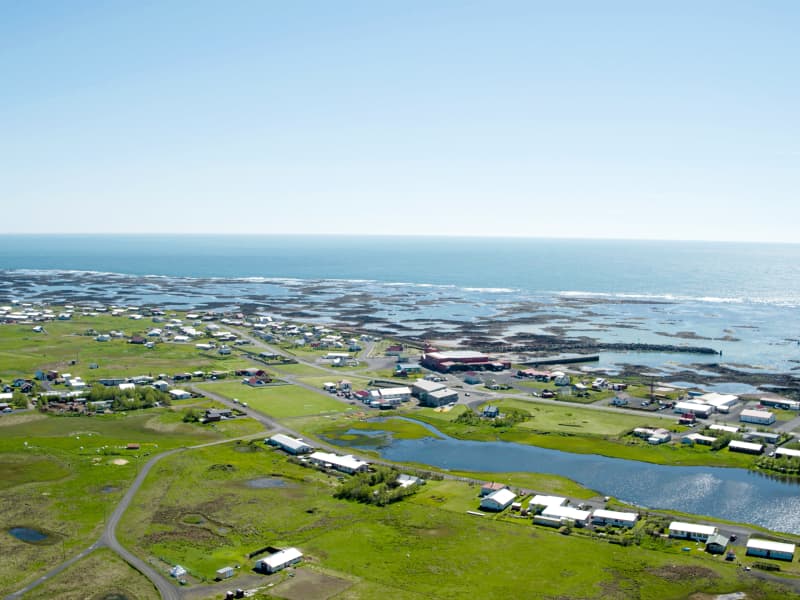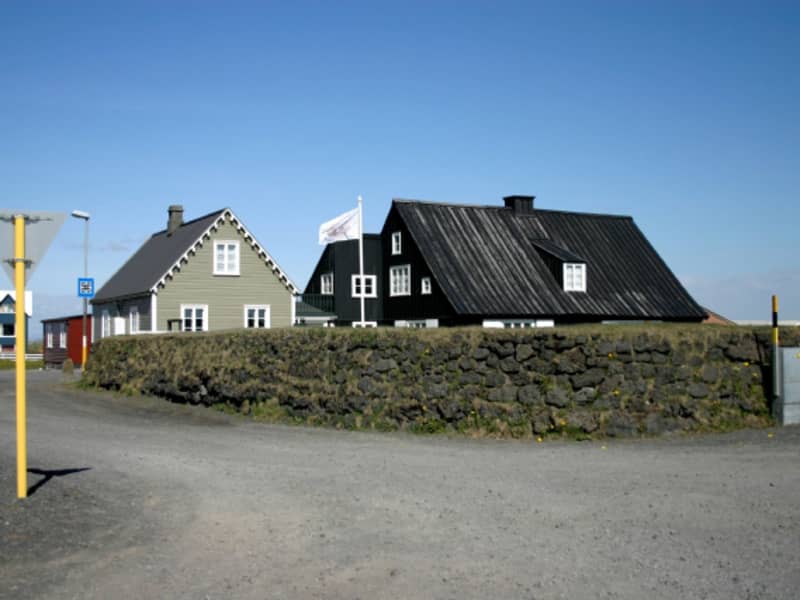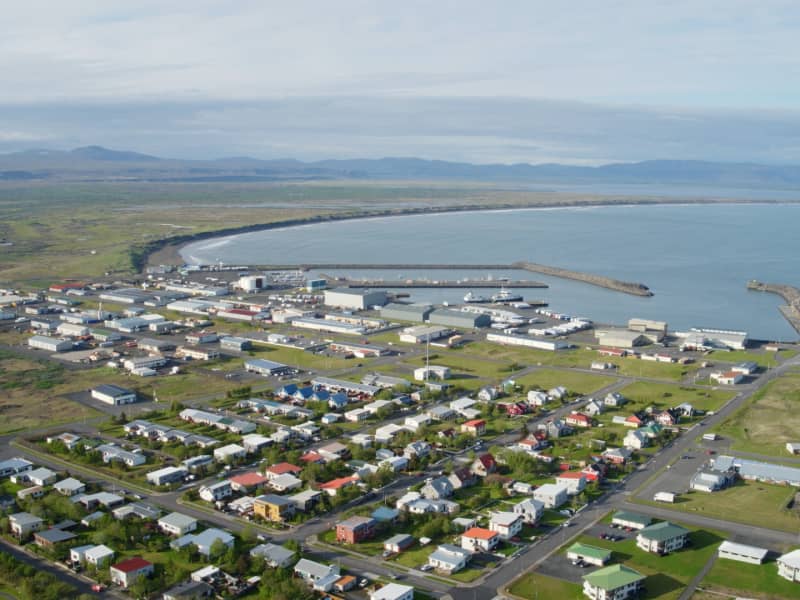The three villages on the South Coast Lighthouse Trail, Stokkseyri, Eyrarbakki and Þorlákshöfn, are unique, each in its own way. They are all fishing villages, although nowadays fishing is only done from Þorlákshöfn. Eyrarbakki is the oldest village of those three. The oldest house in the village is called Húsið (e. the House) and was built in 1765. During the Danish king's monopoly Eyrarbakki was one of the largest towns in Iceland, even larger than Reykjavík. For a while, it looked like Eyrarbakki, with all its services and trade, would become the capital of the country.
Around 1890, the formation of Stokkseyri began, and this period of development lasted until 1930. Wooden houses with corrugated iron gradually built up instead of the traditional turf houses. Today, the village is characterized by a mixture of old and new houses, an old fish processing factory and next to it the Stokkseyri Church. On the observation platform, south of the cemetery, you can find information about the lay of the land and place names.
Þorlákshöfn gets its name from Þorlákur, the holy bishop of Skálholt (1133-1193). Þorlákshöfn possesses an excellent natural harbor and is close to rich fishing grounds. In the period when rowing boats were used it was common for 30-40 boats to be fishing from Þorlákshöfn, meaning that 300-400 people lived in the fishing station over the season, living in dwellings made of stone and turf. The current urban area was formed around the middle of last century following the development of a powerful fishing company Metill hf. There was also a significant increase in population in the seventies following the volcanic eruption in Heimaey in the Vestmannaeyjar archipelago. Extensive development has taken place in Þorlákshöfn in recent years.



